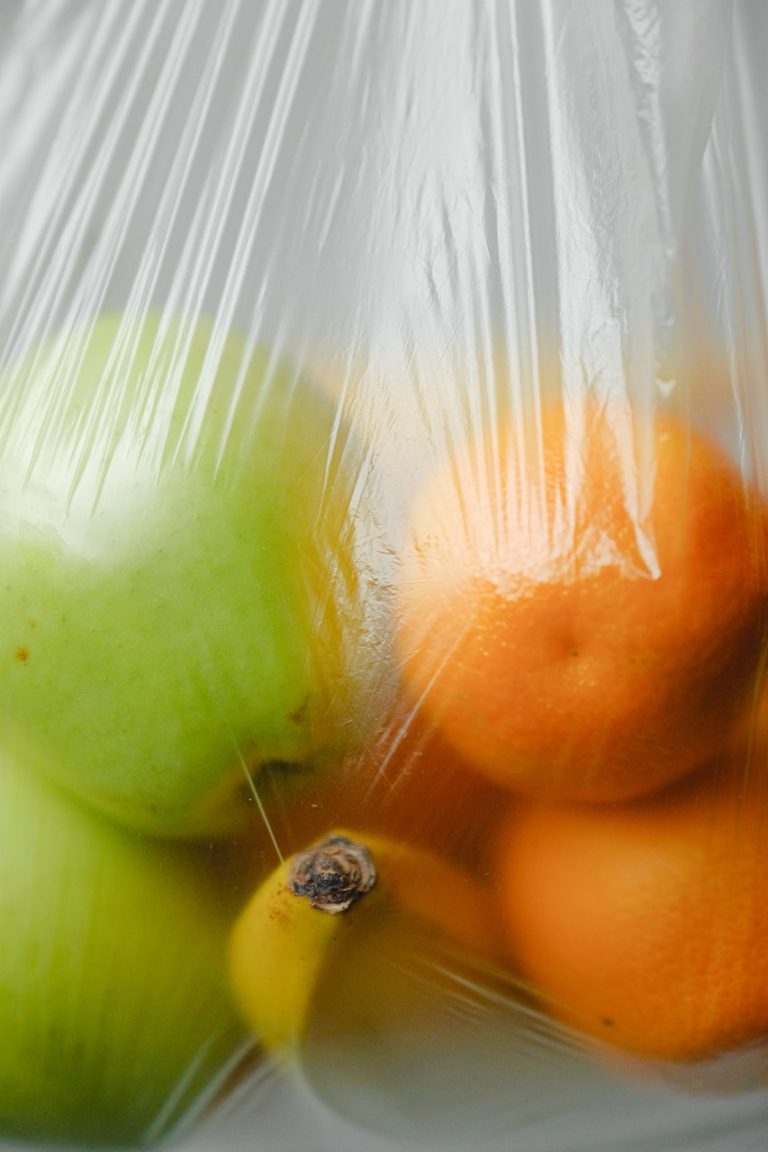
Picture this, you get home, you’re so excited! You’ve just bought a sustainable swap. You take it out of it’s little cardboard box and…it’s wrapped in plastic.
What. The. ****.
That happened to me when I bought my first shampoo bar, Spring & Vine. I was so thrilled to finally have found a shampoo bar! I had been checking Target every time I went, waiting for one to pop up. And one day, it finally did!
I got home and I was all excited, like a kid on Christmas morning. I unbox the soap and there’s that familiar crinkle we all don’t want to hear. Plastic wrap.
Why on earth was my shampoo bar wrapped in plastic? The whole point of making a sustainable swap is to avoid something like that right? Yes. But, no. Let’s talk about it.

Why did they do that?
The answer is, I don’t know. I was just watching a Sustainability YouTuber, her name is Shelbi, and she actually had a similar experience with the same WTF moment I did when trying the Spring & Vine shampoo bar. Here’s her video so you can check it out later!
She didn’t know anymore about the plastic than I do now. I could come up with some guesses about sanitation, or perhaps shelf life, but I would just be guessing. It’s really just not clear why Spring and Vine chose to do that.
But, what about other products? For instance, Blueland cleaning solutions come with plastic bottles, Grove laundry pods come in a plastic bag, and so on.
The answer is, again, I don’t know. At least not all the time. But that doesn’t mean you should throw your hands in the air and move on. And it also doesn’t mean you should avoid the product altogether.
Instead of completely avoiding the product and sticking to your old ways, you should be asking “why?” Why is there plastic here? That’s really where we get the answers we want to see! And the answers to our “why” tell us what we should do next.
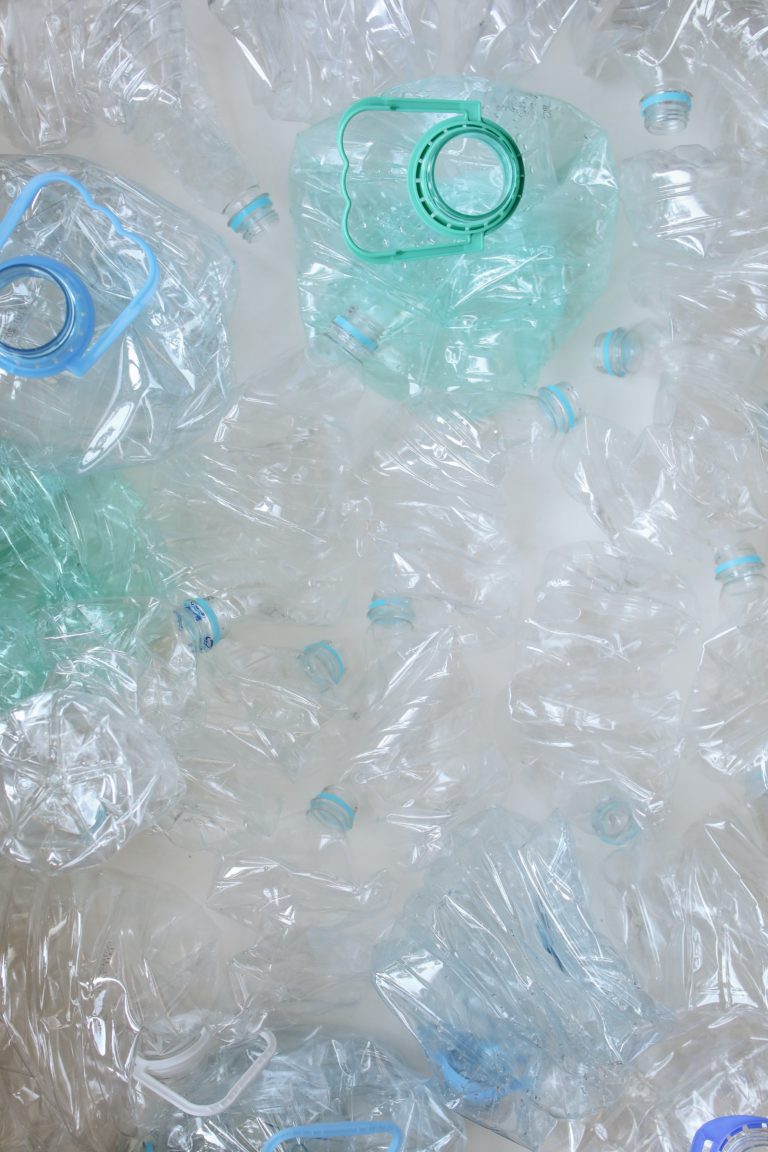
What to do with the "Why?"
So we’ve asked ourselves, and the company, why does your product have plastic? Two things can happen. You get an answer or you don’t.
Yes, the Brand Has an Answer
Blueland has said they use plastic bottles because glass bottles are way too heavy for users to hold when they’re cleaning a house. I find this to be accurate when reading reviews for other brands that do use glass spray bottles.
No, the Brand Doesn't Have an Answer (or It Isn't Clear)
If there isn’t a clear answer, then that’s a red flag. That’s a red flag not just for the product, but for the brand, especially if it’s marketed as a “sustainable” or “green” brand.
I have two examples for when there isn’t a clear explanation for the use of plastic (or really any other non-sustainable material).
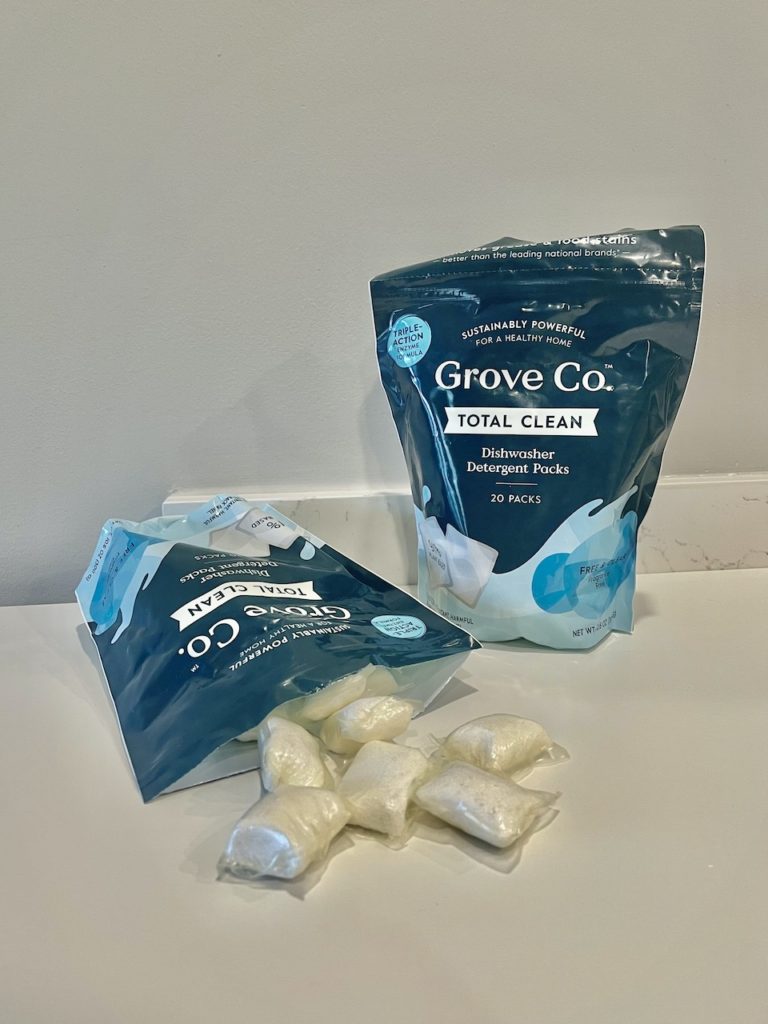
Example 1
Grove has plastic bags for their laundry pods. I couldn’t find a specific reason as to why. But, they do have a crystal clear goal to eliminate plastic packaging by 2025. That’s basically 3 years and some months.
So even though the laundry pods come in plastic, if I like the pods then I can reasonably count on the packaging changing soon. And, I know that Grove is a good brand for many other reasons (see my Grove brand review) too.
Example 2
The second example for when a brand doesn’t give a clear explanation as to why they use plastic is Mrs. Meyer’s. I have a whole review on them as well. My biggest complaint was that everything is packaged in plastic. And as it turns out, the company as a whole isn’t that transparent.
Here, the plastic packaging was a red flag and that led me to doing more research. That research led me to discovering that Mrs. Meyer avoids difficult things like publicly displaying a clear mission, vision, and values while enjoying a “clean and green” marketing image despite unsustainable packaging.
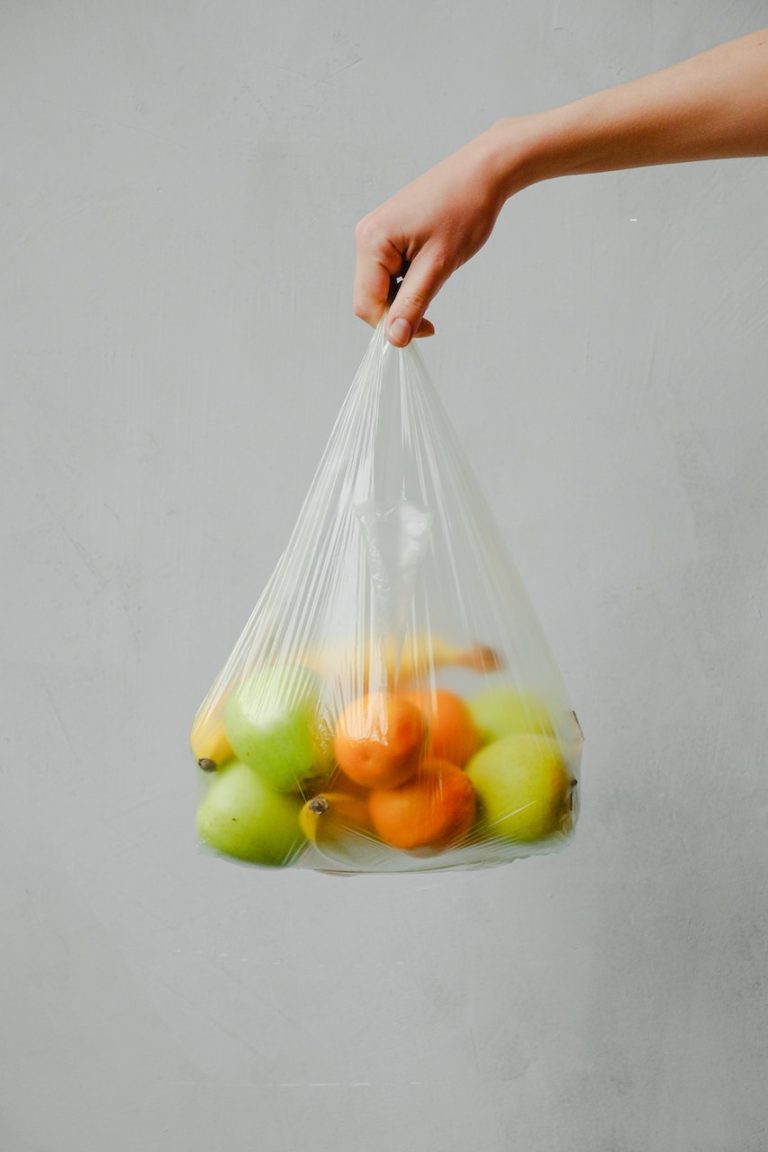
Wrapping Up: What to do with the "Why?"
Are you with me? So far we have asked, “why is X brand using plastic here?” (Or another poor choice.) From there we either get:
1) An explanation (you can choose to accept it or not)
2) No explanation but you understand the company behind the decision more and support the company’s overall mission or vision
3) No explanation AND the company is vague, misleading, or just fails to own up to its decisions completely
Those answers might feel like they answered nothing. But really, they tell us everything we need to know. Ideally, you’re purchasing from a brand that takes responsibility for its impact on the planet. That would be a company that gives you an explanation (answer 1).
The next best thing would be a company that provides an answer like number 2. You might not completely understand the choice to include a poor material or ingredient, but you understand the company’s goals and direction and you support them overall.
The worst outcome, is the company plays around with it’s words and doesn’t own up to its impact, and they don’t give you a clear image of whether or not they even care at all about their impact on the planet.
What do you do next?
You might be tempted to say, “only go with a company that gives a clear and reasonable explanation!” Or maybe, “maybe I’ll go with a company that gives a clear purpose and direction even if they have a few bad choices mixed in there.”
Not so fast. Before you can make a decision for yourself, I want to take us back to the very foundation of this blog. I created this blog to help anyone and everyone live a more sustainable life no matter where they’re starting. So it naturally follows that the most important variable here is, where are you in your sustainable journey? And, with that, what makes the most sense for you right now?
Sometimes the most affordable option on the shelves isn’t the most sustainable option. It might be that the best choice for you is what’s available at a similar price to what you have currently.
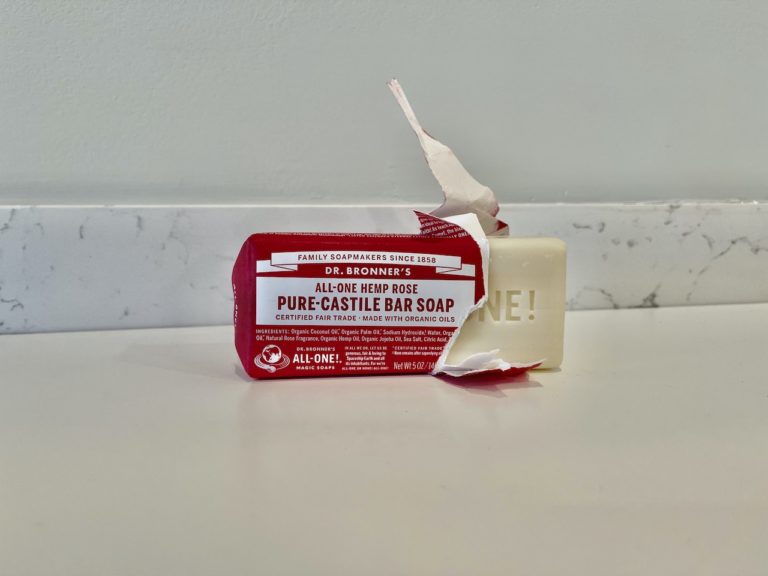
If you're newer to the sustainability journey...
When I first switched to bar soap for body wash, I switched to Dove. Some sustainability influencers might frown on that because Dove is owned by Unilever. Unilever produces a BUNCH of plastic products.
But I also understand (on a personal level), that an 8 pack of Dove is probably going to run you $1 per bar, maybe even less. While Dr. Bronner’s bar soap is going to be $4+ after tax. If I were to say, “only buy X brand because they’re the most Sustainable option” I might ostracize and exclude a lot of you that can’t do that. Especially if you’re shopping for more than one person.
So if buying X brand for $1 a bar is what fits your wallet at the moment, it’s at the same grocery store you go to for all your groceries, and you like it, then go for it! It can still be a sustainable swap, believe it or not. That’s especially true if you’re switching from a thick plastic bottle of body wash.
In making that swap, you have significantly decreased the amount of plastic you’re consuming and discarding even if there are “more sustainable” choices out there.
If sustainability isn't new to you...
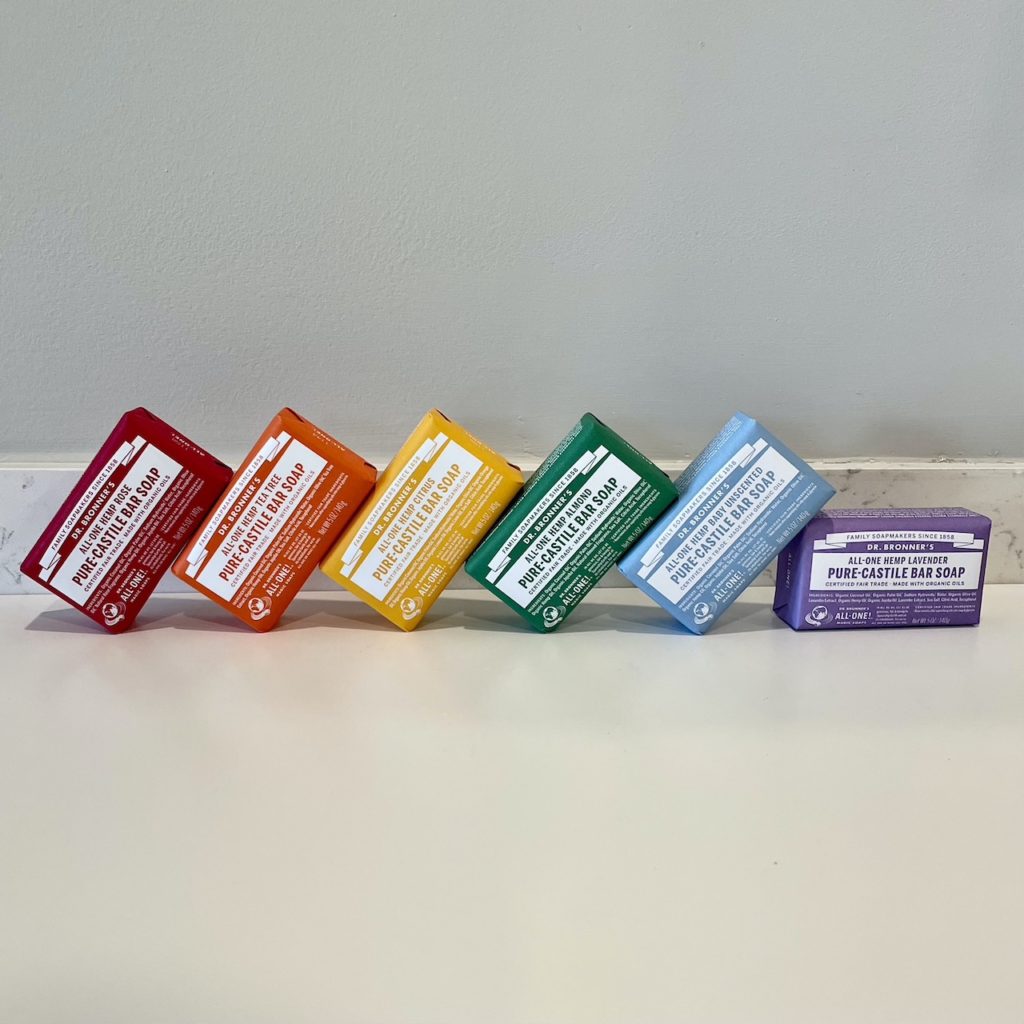
Now, what if you’re more advanced in your journey? Well then, something like Dr. Bronner’s soap might make sense for you, to follow the body wash example. Or perhaps a hand made bar soap from the local farmer’s market or Whole Foods makes more sense.
The point is, you want to be taking a step forward, if it will also fit in your budget. For me that looked like switching from Dove bottled body wash to Dove bar soap. Then trying handmade soap from Whole Foods and realizing it was way too expensive for me and going back to Dove. And then finally trying Dr. Bronner’s and being pretty happy with it and making the swap.
I stepped forward, and then forward again. Took one step back, and then another step forward. And that’s just with body wash! The same thing can be done with laundry detergent, dish soap, water bottles, make up, face wash, window cleaner, and the list goes on.
So if you’re sitting there and asking why did my shampoo bar come wrapped in plastic? You’re debating whether or not to buy it again. I say ask some more questions. And go from there.
But if it’s what makes the most sense for you, and it’s more sustainable than where you started, then you have every reason to take a step forward and don’t look back. Chances are, it won’t be your last step in the journey and it’s certainly not the most important.
Living sustainably is not about perfection, it’s about progression.
Thanks for joining me today! If you liked this content and want to see more, please subscribe to my newsletter. You can do that here!
Sustainably is supported by readers like you. When you buy through links on this site, we may earn an affiliate commission at no additional cost to you. You can read more about affiliate links on our “Affiliate Marketing…” page.
Pingback: Mission, Vision, Values: What are they? Are they important? - Sustainably
Pingback: Is Spring & Vine Bar Shampoo Right for You? - Sustainably
Pingback: Do Metal Straws Help the Environment? What You Need To Know - Sustainably
Pingback: Is Snapware Sustainable? A Full Product Review - Sustainably